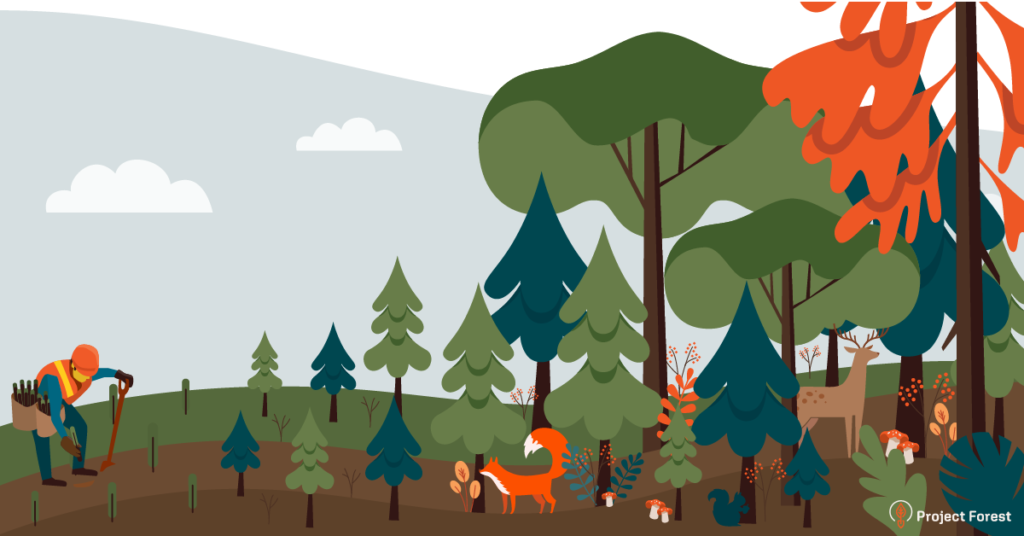By rewilding non-productive land, we are increasing biodiversity, but how exactly?
One of the biggest challenges of our time is the loss of biodiversity due to habitat loss and degradation, invasive species and climate change. Through planting resilient forests with a mixture of tree species—rather than monoculture plantations—bushes and understory plants, Project Forest and our partners are working to reverse this trend by restoring the whole forest.

We work hand in hand with Indigenous communities, relying on traditional knowledge to shape what we plant on the site. Community elders can help us identify what species once grew on the land but are no longer present. Together, we select the most suitable and culturally significant plants to re-establish, knowing that what once grew in this place will grow again.
As the transition from field to forest begins, and the canopy closes and increases in complexity, we plan to monitor precisely how the biodiversity of the new forest is changing. Working with innovators in the environmental monitoring space, we are designing processes to capture biodiversity changes happening in real-time.
The forest provides endless solutions for the challenges we are facing. Join us as we rewild Canada, one forest at a time.